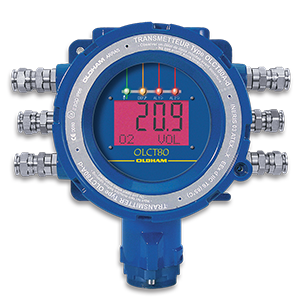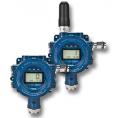- Home
- /
- OLCT 80 Fixed Gas Detector
Oldham is pleased to propose its wireless system with the OLCT 80 field detector/transmitter. This model allows wireless connectivity in ATEX 1 zones.
Features and benefits of the OLCT 80 Wireless include:
- An infrared remote controller and on-board display for non-intrusive, one-man calibration;
- Flameproof or intrinsic-safety sensors;
- A design suitable for explosive areas;
- Low power requirements;
- Universally accepted frequency of 2.4 GHz/900MHz; and
- Flexible input/output options, including analog, TOR and Modbus RS485
Developed in compliance with the strictest specifications, OLCT 80 transmitters are the standard in the gas detection market.
Designed to meet the demanding needs of the largest industrial companies, the OLCT 80 is a major achievement in terms of technical performance and cost optimization. Available as remote version, flameproof or intrinsic safety approved sensors depending on gases to be detected. Detects O2, combustible, toxic and refrigerant gases. Non-intrusive, one-man calibration.
Documentation
Certifications
Certification
Description
| ATEX | A product regulation which ensures the safety of equipment intended for use in potentially explosive atmospheres in the European Union. |
| CE | indicates that a product has been assessed by the manufacturer and deemed to meet EU safety, health and environmental protection requirements. |
| China Ex | Testing and certifications providers in China |
| EAC | Gost R and EAC certifications are mandatory in order to have access at all to the Russian market and the markets of the five EAC members |
Gases
Symbol
Description
| C₂H₂ | Acetylene |
| C₂H₄ | Ethylene |
| C₂H₄O | Ethylene Oxide |
| C₂H₆ | Ethane |
| C₂H₆O | Ethanol |
| C₃H₆ | Propylene |
| C₃H₆O | Acetone |
| C₃H₈O | Isopropyl Alcohol |
| C₄H₁₀O | Isobutanol |
| C₄H₆ | Butadiene |
| C₄H₈O | Methyl Ethyl Ketone (MEK) |
| C₅H₁₂ | Pentane |
| C₆H₁₄ | Hexane |
| C₆H₆ | Benzene |
| C₇H₈ | Toluene |
| C₈H₁₀ | Xylene |
| CH₂₀ | Formaldehyde |
| CH₃OH | Methanol |
| COCl₂ | Phosgene |
| Combustible % LEL | Combustible Percent Lower Explosive Limit (LEL) |
| F₂ | Fluorine |
| HF | Hydrogen Fluoride |
| N₂H₄ | Hydrazine |
| VOC | Volatile Organic Compound |


